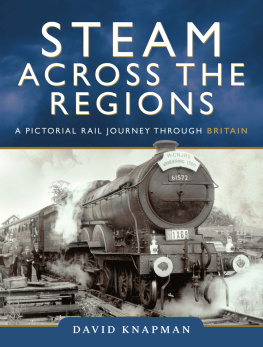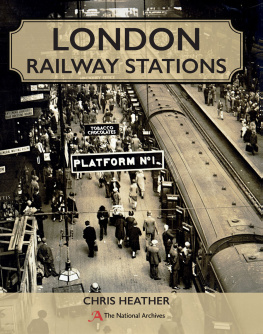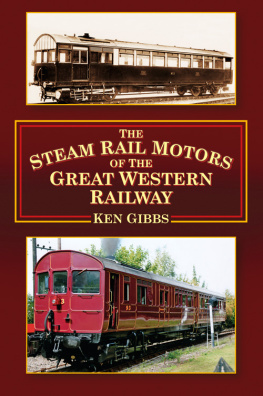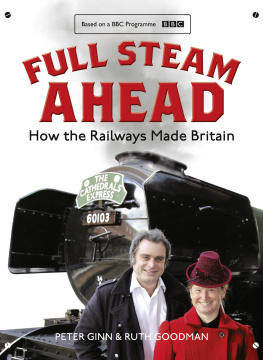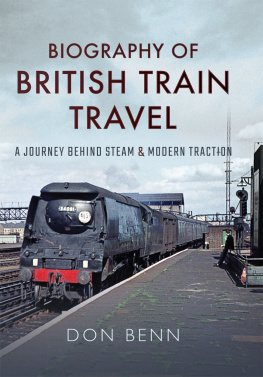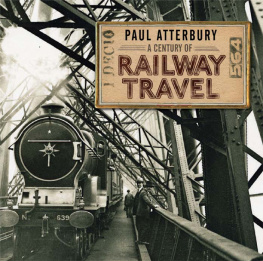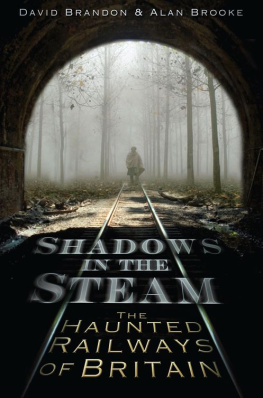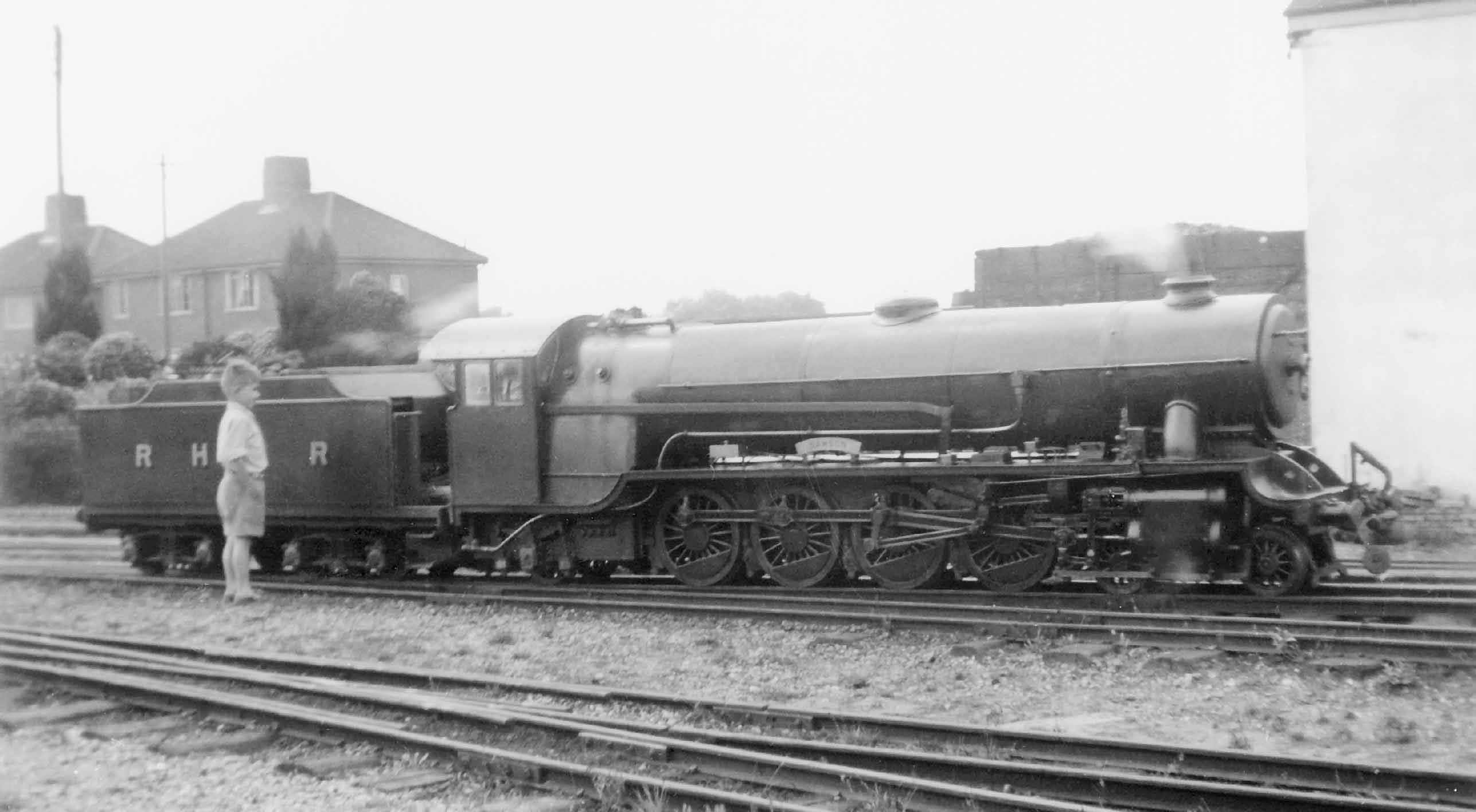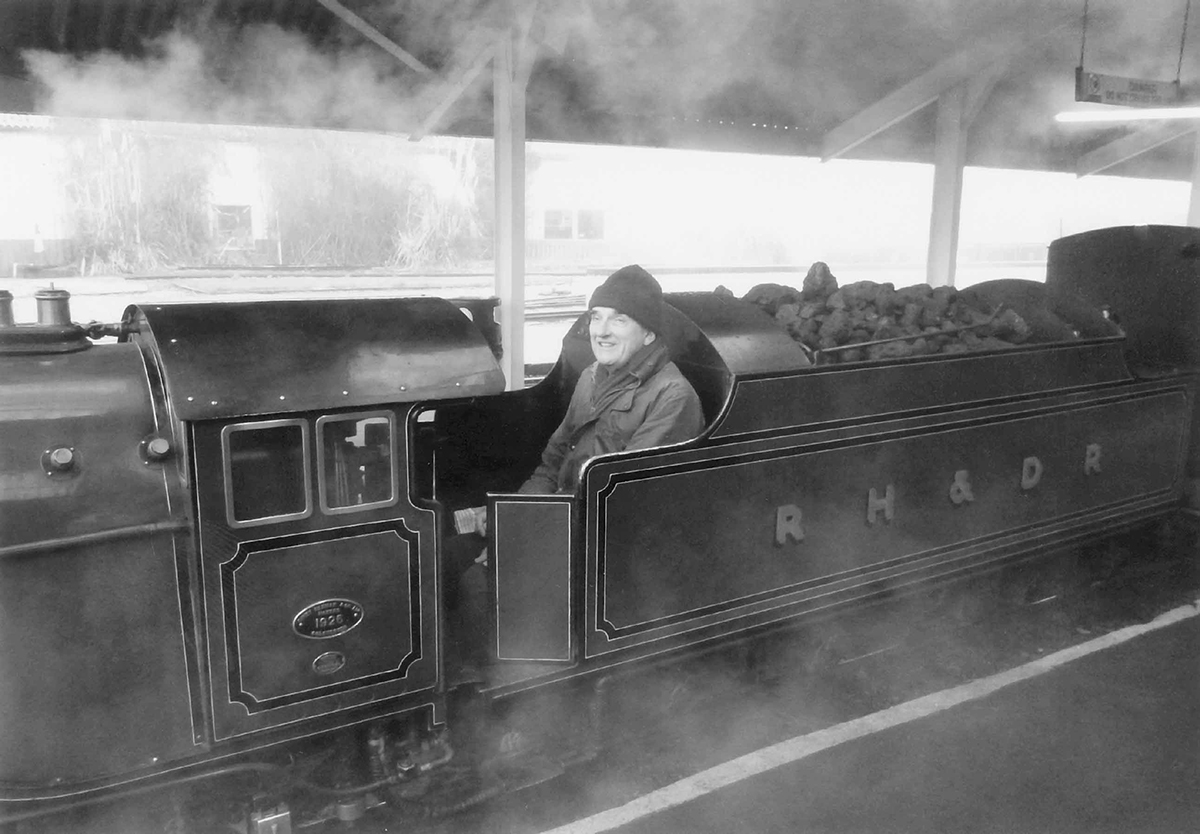Pagebreaks of the print version

STEAM ACROSS THE REGIONS
A PICTORIAL RAIL JOURNEY THROUGH BRITAIN
STEAM ACROSS THEREGIONS
A PICTORIAL RAIL JOURNEY THROUGH BRITAIN
DAVID KNAPMAN
First published in Great Britain in 2020 by
Pen and Sword Transport
An imprint of
Pen & Sword Books Ltd
Yorkshire - Philadelphia
Copyright David Knapman, 2020
ISBN 978 1 52676 394 5
ePUB ISBN 978 1 52676 395 2
Mobi ISBN 978 1 52676 396 9
The right of David Knapman to be identified as author of this work has been asserted by him in accordance with the Copyright, Designs and Patents Act 1988.
A CIP catalogue record for this book is available from the British Library.
All rights reserved. No part of this book may be reproduced or transmitted in any form or by any means, electronic or mechanical including photocopying, recording or by any information storage and retrieval system, without permission from the Publisher in writing.
Pen & Sword Books Ltd incorporates the Imprints of Pen & Sword Books Archaeology, Atlas, Aviation, Battleground, Discovery, Family History, History, Maritime, Military, Naval, Politics, Railways, Select, Transport, True Crime, Fiction, Frontline Books, Leo Cooper, Praetorian Press, Seaforth Publishing, Wharncliffe and White Owl.
For a complete list of Pen & Sword titles please contact
PEN & SWORD BOOKS LIMITED
47 Church Street, Barnsley, South Yorkshire, S70 2AS, England
E-mail:
Website: www.pen-and-sword.co.uk
or
PEN AND SWORD BOOKS
1950 Lawrence Rd, Havertown, PA 19083, USA
E-mail:
Website: www.penandswordbooks.com
INTRODUCTION
W hen I first started writing Steam on the Southern & Western, I had no conception that my photographs might extend to a third book. As I write this introduction, Steam on the Eastern & Midland has just been published by Pen & Sword and John Scott-Morgan has very supportively agreed to this third volume, Steam Across The Regions.
This book will take the reader on a personal railway journey across Britain, starting briefly in Scotland before moving to the North Eastern Region, then the Eastern and followed by the London Midland. Heading south, we continue to the Western Region, with the Southern Region taking the closing role, which brings us neatly to the beginning of the Trilogy where we visit my early home base, the Guildford to Redhill line, and finish with Maunsells at Barry Island. A positive finale concludes the book.
Some of the locations in this book will have appeared in my first two books, but each of the pictures is a fresh photograph.
To give further clues to the effects of being captured by steam at an early age, here I am, aged five and three quarters, admiring the Romney, Hythe & Dymchurch Railways 4-8-2 Samson at New Romney on 25 July 1951.
(J.J. Knapman)
(RH & DR)
The captivation is further underlined by a footplate experience on the RH&DR on 8 March 2013 with 4-6-2 Southern Maid , an unforgettable treat, in spite of the rain, and here is the evidence.
In a similar approach to my first two books, the majority of photographs will depict trains, but steam era scenes of branch lines will also appear, together with the occasional photograph from my fathers Brownie Box camera collection. Very few of these pictures have been published before, but if you recognise a picture or two, please bear with me.
Once more, I am pleased to express my grateful thanks to John Scott-Morgan, Janet Brookes and the Pen & Sword Team, whose patience and support is a delight.
Further grateful thanks are due to Jenifer and David Alison, whose review of my writing has helped enormously in bringing this book to fruition.
I hope you enjoy reading this final volume of my black and white photographs, which has given me much pleasure to write. If you have comments you would like to pass on, please do so via Pen & Sword. Thank you for your interest and support.
David Knapman,
Woburn
October 2020
C HAPTER 1
SCOTTISH REGION
B y the time I managed to reach Scotland, it was during the era of my increasing interest in old motor cars and, coupled with the knowledge that steam was in decline, photographing trains seemed to have a lower priority than it should have done. Mea culpa! A holiday in summer 1965 with pals, touring Scotland in a 1932 Austin 20 limousine for which we had paid 5 each, really centred on the ability of the car to reach John OGroats, then travelling across towards Cape Wrath and returning by the West Coast. Not hard to imagine why steam was not in the forefront! However, four photographs were taken to provide a wee flavour for this chapter. Interestingly, on Nationalisation, the Scottish Region comprised 3,730 route miles, a mere 52 miles less than the Western Region, but such different terrain.
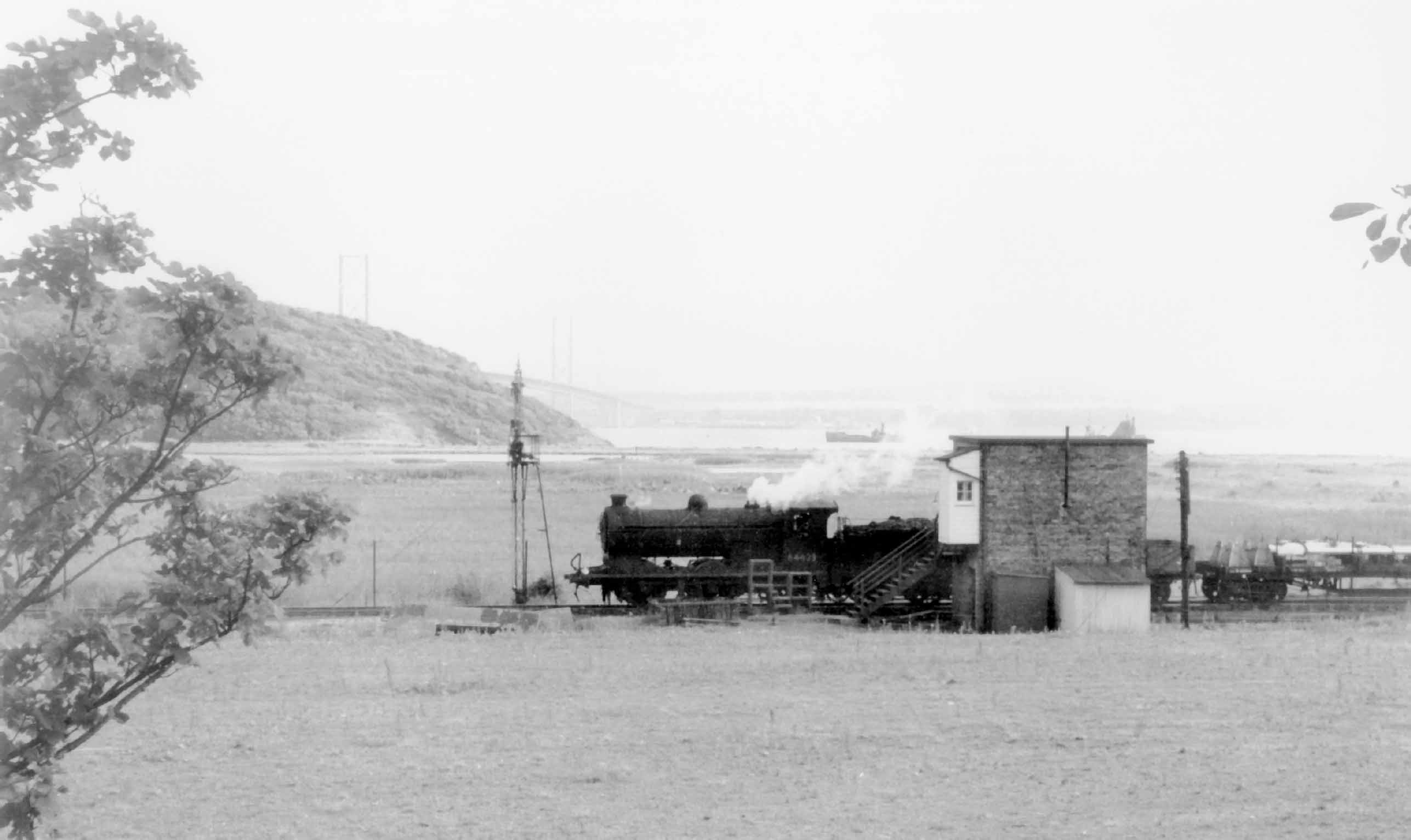
I cannot recall how we reached this location on the Rosyth Dockyard branch; it was probably whilst taking a breather after reaching the milestone of the Forth Road Bridge, which is just visible in this picture of J37 0-6-0 64623 with a freight working at the Rosyth Dockyard branch signal box. This is a type 7 box datedNovember 1877 and which closed in July 2008. The box is reputedly protected by a preservation order. 64623 was Dunfermline based at the time. 19 July 1965.
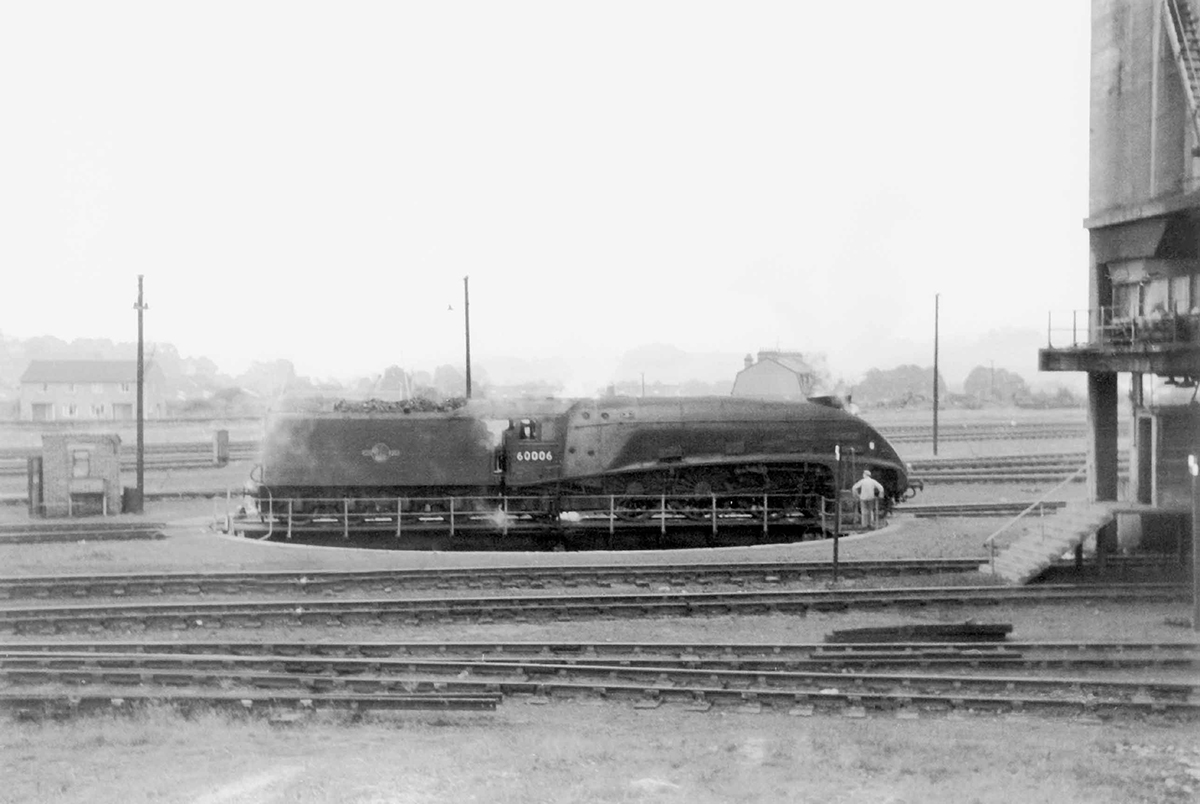
on our approach to Perth, we observed activity at Perth shed and were fortunate to see Ferryhills A4 4-6-2 60006 Sir Ralph Wedgwood on the turntable. 19 July 1965.
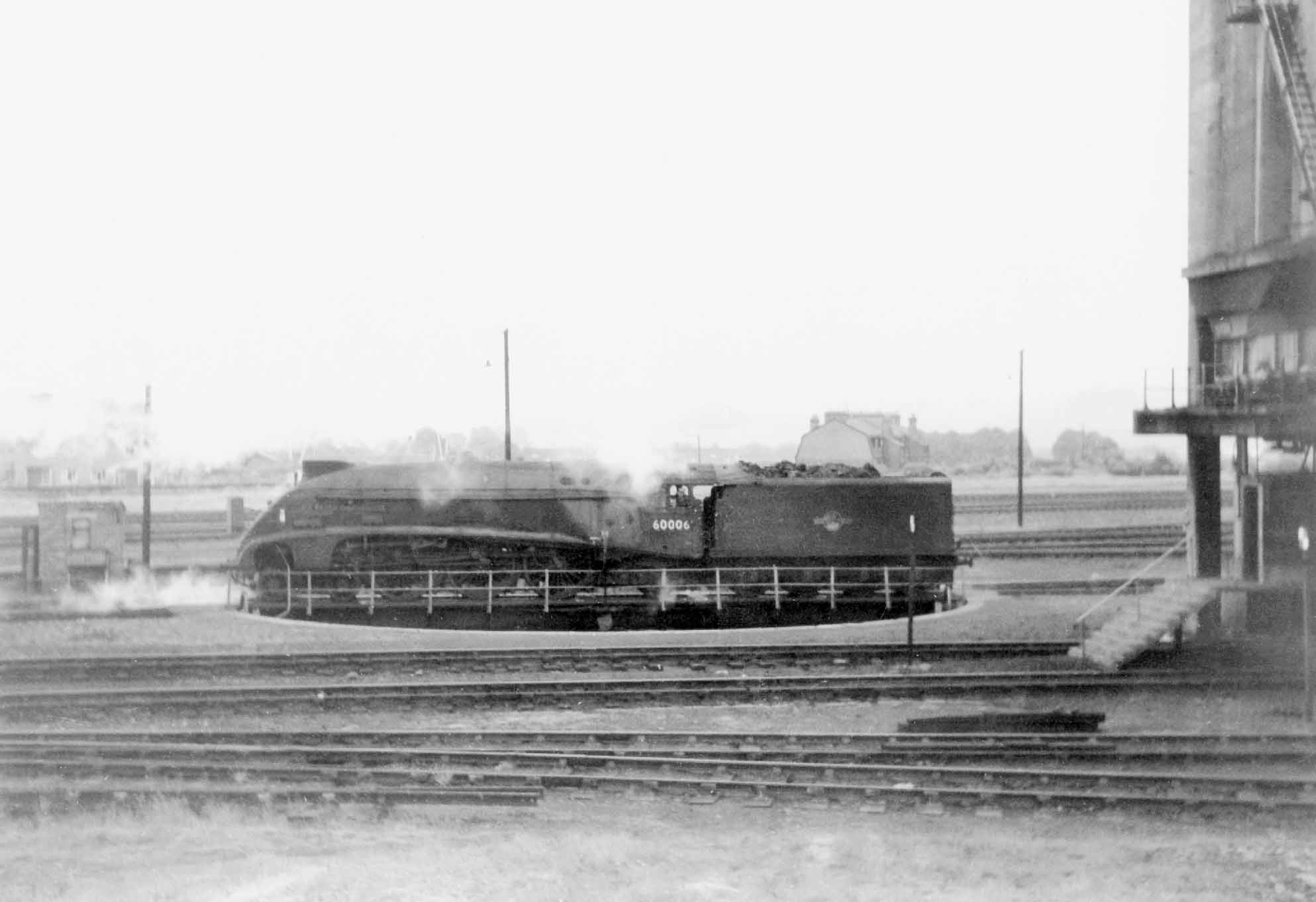
A few minutes later, 60006 had been turned to face north, when it would head for Perth station to tackle its next duty. The A4 was withdrawn in the following month. Note the coaling tower to the right. 19 July 1965.
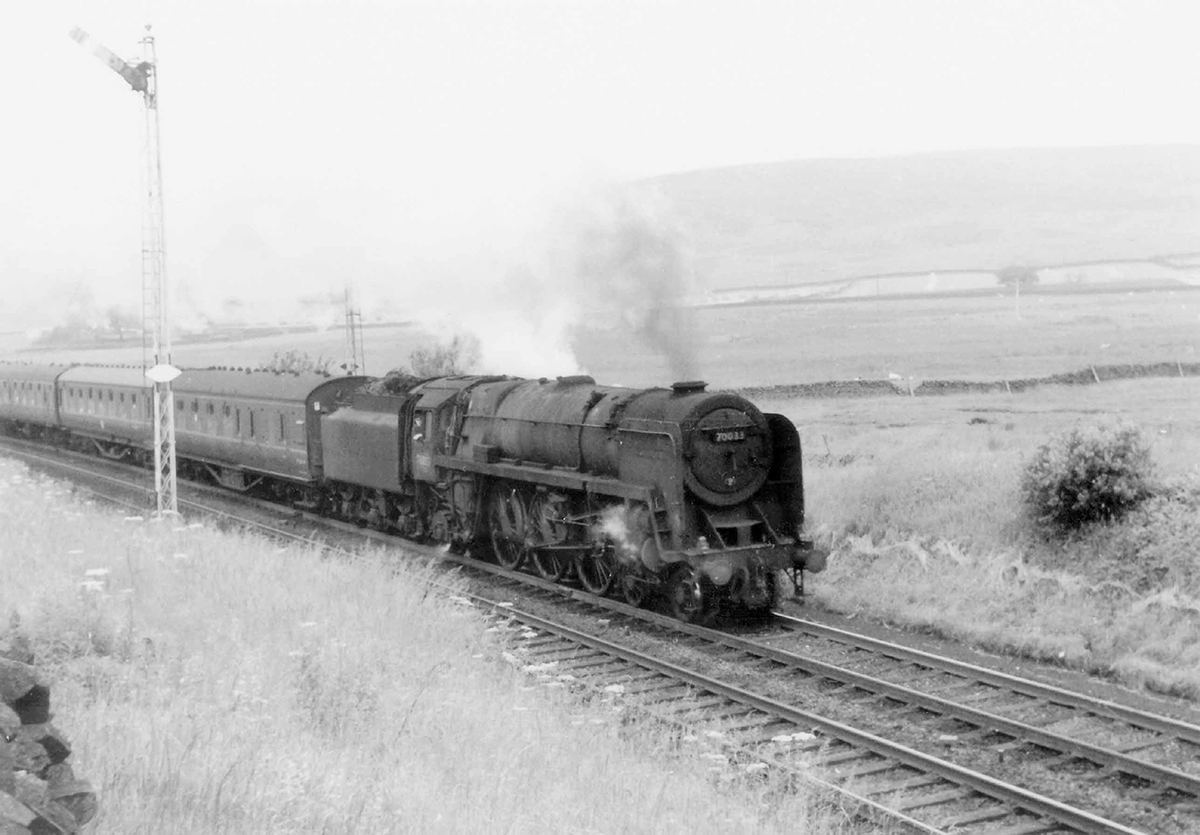
on the way south, our journey took us to Stirling where A2 4-6-2 60532 Blue Peter was seen in action, but no photograph, sadly. Further south, the signal at Beattock summit showed a train was due and filthy Britannia 4-6-2 70033 Charles Dickens came past, competently doing the job. Two LMS coaches are at the head of the train. 70033 was based at Carlisle Kingmoor, its final base before its demise in June 1967. 24 July 1965.
C HAPTER 2
NORTH EASTERN REGION
T he North Eastern Region of British Railways stretched from Newcastle upon Tyne in the north to York, Leeds and Hull in the south, with outposts in the west such as Kirkby Stephen and in the east, Whitby. In the BR era covered by this book, station signs were in a tangerine colour. Nationalisation of the railways in 1948 nearly saw the old London and North Eastern Railway, in England, emerge as the Eastern Region, but BR introduced a new North Eastern Region with its management base in York. The new North Eastern and Eastern Regions were however merged in 1967 as part of the British Railways Board. With this information in mind, let us look at some focal points of the North Eastern Region.

